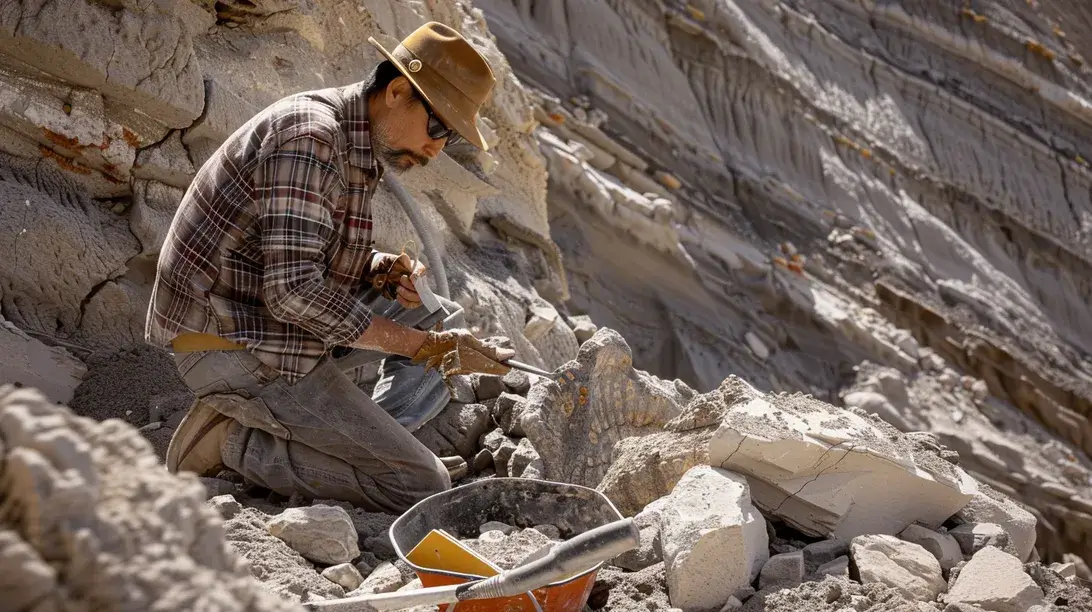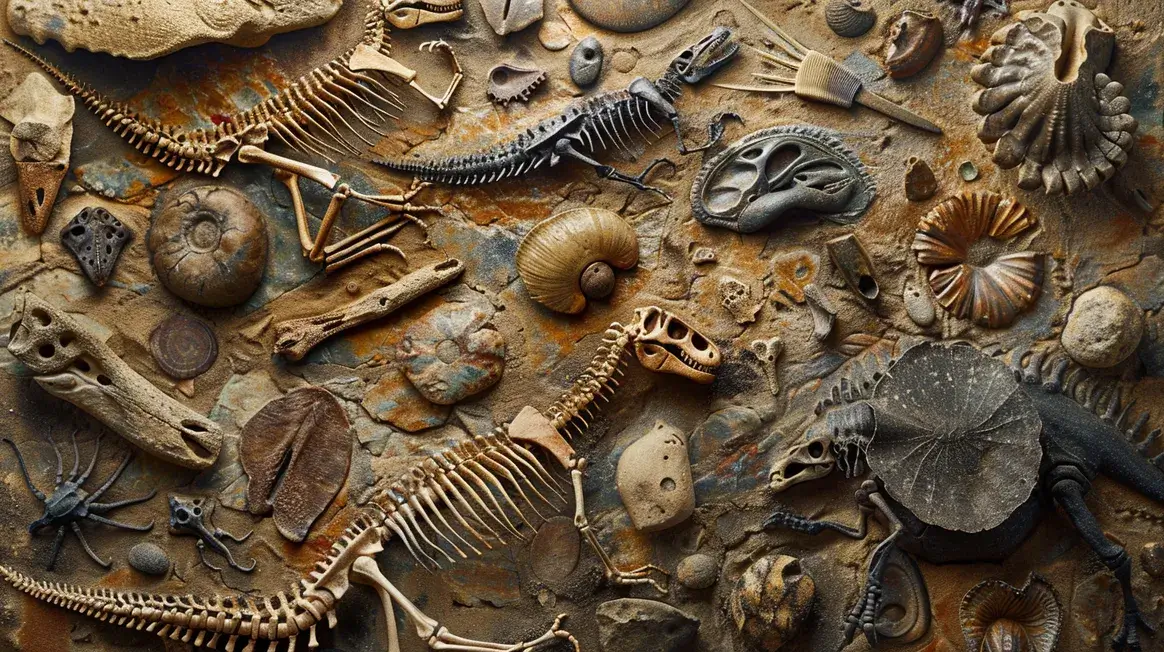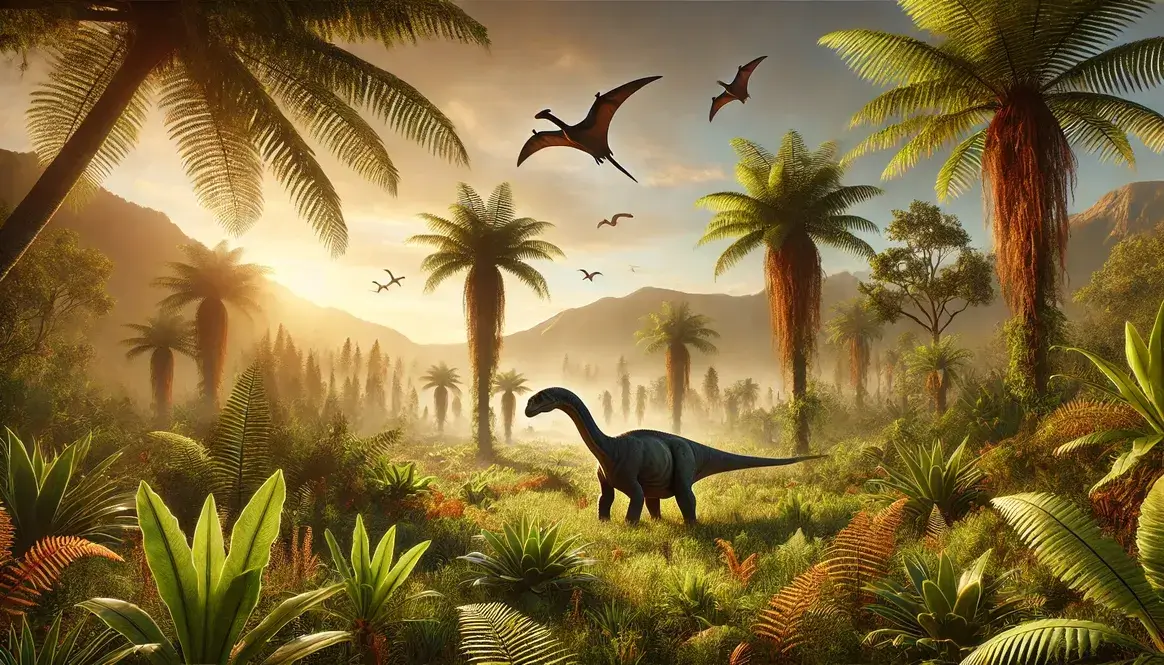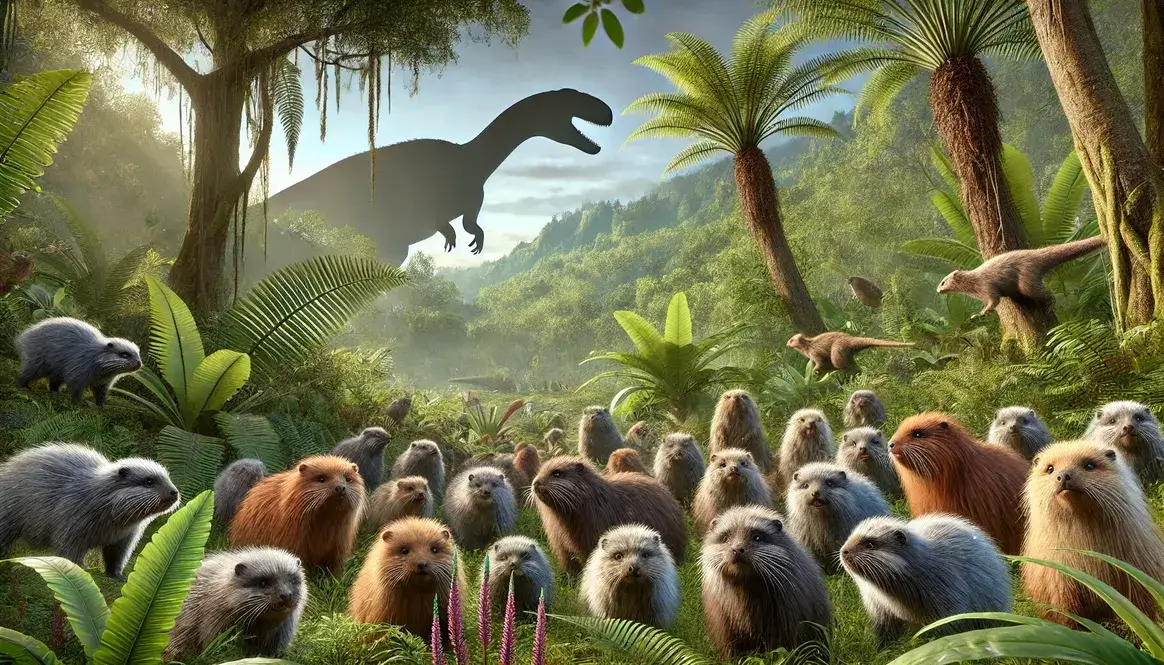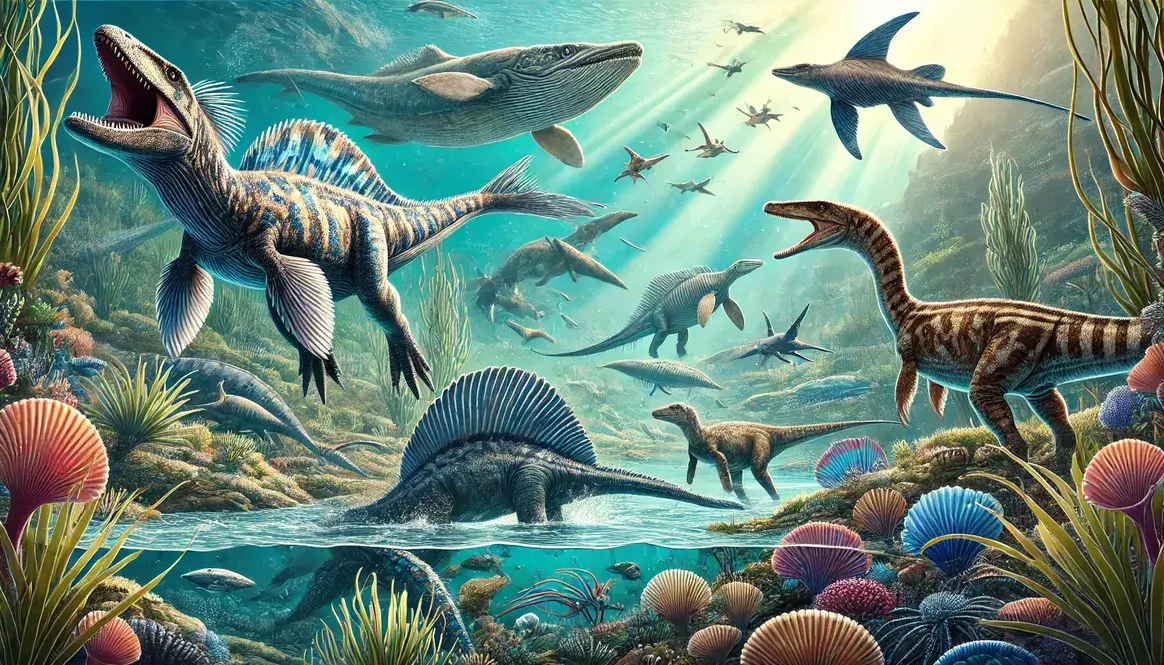Imagine stepping back in time, about 145 to 201 million years ago, when dinosaurs roamed the Earth. This fascinating period, known as the Jurassic, has left us with incredible clues about ancient life. These clues are preserved in Jurassic fossil sites scattered around the world.
Jurassic fossil sites are like treasure chests for paleontologists – scientists who study prehistoric life. These sites give us a peek into a world long gone, showing us what animals and plants lived, how they behaved, and what their environments were like. By studying Jurassic fossil sites, we can piece together the story of life on Earth millions of years ago.
Famous Jurassic Fossil Sites Around the World
Let’s take a tour of some of the most famous Jurassic fossil sites. Each of these places has its own unique story to tell about life in the Jurassic period.
Solnhofen Limestone, Germany
The Solnhofen Limestone in Bavaria, Germany, is one of the most famous Jurassic fossil sites in the world. It’s like a prehistoric photograph, capturing a moment in time from about 150 million years ago.
- Key fossils: The star of Solnhofen is Archaeopteryx, often called the “first bird.” This creature had both dinosaur and bird features, helping scientists understand how birds evolved from dinosaurs.
- Unique preservation: The limestone at Solnhofen formed from fine-grained sediments in shallow lagoons. This environment allowed for incredibly detailed preservation, even of soft tissues like feathers and skin!
Morrison Formation, Western United States
Stretching across several states in the western U.S., the Morrison Formation is a fossil hunter’s dream. It’s one of the most productive Jurassic fossil sites in North America.
- Extent: This massive formation covers about 1.5 million square kilometers, roughly the size of Mongolia!
- Notable discoveries: The Morrison Formation has given us some of the most famous dinosaurs, including Allosaurus, Stegosaurus, and Diplodocus.
- Fossil diversity: Beyond dinosaurs, the Morrison Formation has yielded fossils of early mammals, crocodiles, turtles, and even ancient plants.
Lyme Regis, England
Often called the “Jurassic Coast,” Lyme Regis in southern England has been a hotspot for fossil hunters for centuries.
- Historical significance: Mary Anning, one of the first and most famous fossil hunters, made many of her groundbreaking discoveries here in the early 1800s.
- Marine reptile fossils: Lyme Regis is famous for its marine reptile fossils, including ichthyosaurs and plesiosaurs. These creatures ruled the Jurassic seas!
- Early dinosaur research: Fossils from Lyme Regis helped scientists first understand that extinct animals once roamed the Earth.
Liaoning Province, China
While not purely Jurassic (it spans the Late Jurassic to Early Cretaceous), the fossil beds of Liaoning Province in northeastern China are too important to leave out.
- Feathered dinosaur discoveries: Liaoning has revealed numerous feathered dinosaur fossils, revolutionizing our understanding of dinosaur appearance and behavior.
- Exceptional preservation: The fine-grained sediments in Liaoning preserved even the most delicate structures, including feathers, skin, and sometimes even stomach contents!
These Jurassic fossil sites are just a few examples of the windows we have into prehistoric life. Each site tells a unique part of the Jurassic story, helping us understand the incredible diversity and evolution of life during this fascinating period of Earth’s history.
Types of Fossils Found at Jurassic Sites
Jurassic fossil sites are treasure troves of prehistoric life, each fossil a puzzle piece in the grand picture of Earth’s past. From towering dinosaurs to tiny plant spores, these ancient remains help us reconstruct a world long gone. Let’s dig into the various types of fossils that bring the Jurassic period to life.
Dinosaur Fossils
Dinosaurs are the undisputed stars of the Jurassic, and their fossils never fail to captivate us. Jurassic rocks have yielded remains from all major dinosaur groups:
- Sauropods: Long-necked giants like Brachiosaurus and Diplodocus
- Theropods: Fearsome predators such as Allosaurus and Ceratosaurus
- Ornithischians: Plant-eaters including the iconic Stegosaurus
One of the most significant dinosaur discoveries from this era is Archaeopteryx, often called the “first bird.” This creature, with its mix of dinosaur and bird features, has been crucial in understanding the dinosaur-bird connection.
Jurassic dinosaur fossils also provide invaluable insights into dinosaur evolution. We can trace how early sauropods grew from relatively small ancestors into the largest land animals that ever lived, a transformation that still amazes paleontologists today.
Marine Reptile Fossils
While dinosaurs ruled the land, the Jurassic seas teemed with their own fantastic creatures. Marine reptile fossils give us a window into this underwater world:
Ichthyosaurs: These dolphin-like reptiles were built for speed, with streamlined bodies and powerful tails.
Plesiosaurs: With their long necks and paddle-like limbs, plesiosaurs seem almost like prehistoric versions of the Loch Ness monster.
Pliosaurs: The top predators of the Jurassic seas, these short-necked relatives of plesiosaurs had powerful jaws perfect for crushing their prey.
These marine reptile fossils are crucial for understanding Jurassic ocean ecosystems. They show us how reptiles adapted to life in water and help us reconstruct ancient food webs.
Early Mammal Fossils
Though often overshadowed by their dinosaur contemporaries, Jurassic mammals were diverse and played important roles in their ecosystems. Fossils of early mammals like morganucodonts and docodonts show us the beginnings of mammal diversity.
One fascinating discovery is Castorocauda, a beaver-like mammal adapted for swimming. Finds like these demonstrate that early mammals were already evolving to fill a variety of ecological niches, setting the stage for their later success after the dinosaurs went extinct.
Plant Fossils
Jurassic plant fossils paint a picture of the world dinosaurs inhabited and provide valuable insights into ancient climates. The major plant groups of the Jurassic included:
- Conifers
- Cycads
- Ginkgoes
- Ferns
These plant fossils are like prehistoric thermometers and rain gauges. The types of plants preserved can tell us whether an area was warm or cool, wet or dry. For instance, an abundance of ferns might suggest a warm, humid environment.
Jurassic plant fossils also document important evolutionary changes. We see the first appearances of some flowering plant ancestors during this time, though true flowering plants wouldn’t become common until the Cretaceous period.
From the bones of mighty dinosaurs to the delicate impressions of ancient ferns, each type of Jurassic fossil contributes to our understanding of this fascinating period in Earth’s history. Together, they allow us to paint an increasingly detailed picture of life in the age of dinosaurs.
Significance of Jurassic Fossil Sites to Paleontology
Jurassic fossil sites are like time capsules, preserving snapshots of life from millions of years ago. These sites are goldmines for paleontologists, offering crucial insights into Earth’s history and the evolution of life. Let’s explore why these ancient treasure troves are so important for scientific research.
Bridging the Gap in Dinosaur Evolution
The Jurassic period was a time of incredible change and diversification for dinosaurs. Fossil sites from this era help us understand how dinosaurs evolved from their early Triassic ancestors into the diverse groups we know from the later Cretaceous period.
One of the most exciting aspects of Jurassic fossils is the presence of transitional forms – creatures that show features of both older and newer groups. These fossils are like missing puzzle pieces, helping us connect the dots in dinosaur evolution.
For example, the famous Archaeopteryx is a perfect transitional fossil. It shows us a creature caught between two worlds:
- Dinosaur features: teeth, bony tail, clawed fingers
- Bird features: feathers, wishbone, wings
Archaeopteryx helps us understand how theropod dinosaurs evolved into birds, a process that began in the Jurassic period.
Insights into Jurassic Ecosystems
Jurassic fossil sites don’t just give us individual species – they provide windows into entire ancient ecosystems. By studying the variety of fossils found at a single site, scientists can reconstruct complex food webs and habitats.
For instance, the Morrison Formation in North America has yielded fossils of:
- Large herbivores like Stegosaurus and Brachiosaurus
- Fierce predators such as Allosaurus
- Smaller animals including early mammals and reptiles
- Various plant species
This diversity allows paleontologists to piece together a picture of the Jurassic landscape, from the plants that formed the base of the food chain to the top predators.
Understanding Jurassic biodiversity also helps us appreciate the complexity of prehistoric ecosystems. We can see how different species interacted and adapted to their environments, much like organisms do today.
Contributions to Evolutionary Theory
Jurassic fossil sites provide tangible evidence supporting various aspects of evolutionary theory. They show us evolution in action over millions of years, reinforcing key concepts like natural selection and adaptation.
Here are some ways Jurassic fossils contribute to our understanding of evolution:
- Adaptive Radiation: The diversity of sauropod dinosaurs in the Jurassic shows how a group can evolve to fill multiple ecological niches.
- Convergent Evolution: Jurassic ichthyosaurs evolved a body shape similar to modern dolphins, despite being unrelated. This demonstrates how similar environments can shape different animals in similar ways.
- Evolutionary Arms Race: Fossils of predators and prey from the same sites can show how species evolved in response to each other. For example, we see herbivorous dinosaurs developing more complex teeth and jaws, while predators evolved stronger bite forces and sharper teeth.
These fossil-based insights don’t just apply to ancient life. They help us understand evolutionary processes that continue to shape life on Earth today.
In essence, Jurassic fossil sites are far more than just collections of old bones and imprints in rocks. They’re gateways to understanding life’s history on Earth, providing crucial evidence for how evolution works and offering glimpses into worlds long past. Every fossil discovered has the potential to reshape our understanding of life’s incredible journey through time.
Unique Preservation Conditions at Jurassic Sites
The Jurassic period left behind some of the most well-preserved fossils in Earth’s history. But how did these ancient remains survive for millions of years? Let’s dig into the special conditions that turned ordinary remains into extraordinary fossils.
Lagerstätten: Extraordinary Fossil Deposits
In the world of paleontology, some fossil sites stand out from the rest. These exceptional deposits are known as Lagerstätten (singular: Lagerstätte), a German term meaning “storage place.” Lagerstätten are fossil sites with extraordinary preservation, often including soft tissues and complete skeletons.
Jurassic Lagerstätten are particularly valuable because they provide incredibly detailed glimpses into ancient life. Some famous examples include:
- Solnhofen Limestone (Germany): Home to the Archaeopteryx fossils, with preserved feather impressions.
- Holzmaden Shale (Germany): Known for exceptionally preserved marine reptiles and fish.
- Morrison Formation (USA): While not a Lagerstätte in the strictest sense, it’s known for its abundance and diversity of dinosaur fossils.
These sites are like high-definition snapshots of Jurassic life, preserving details that would normally be lost to time.
Factors Contributing to Exceptional Preservation
So, what makes these sites so special? Several factors can contribute to exceptional fossil preservation:
Anoxic Environments
Imagine a deep, stagnant lake or lagoon where nothing stirs the water. In these oxygen-poor (anoxic) environments, decay-causing bacteria can’t thrive. This means that when an animal dies and sinks to the bottom, its remains are more likely to be preserved before they can decompose.
Rapid Burial
Sometimes, nature acts fast. A sudden mudslide or sandstorm can quickly bury animals and plants, protecting them from scavengers and the elements. This rapid burial is crucial for preserving soft tissues and delicate structures like feathers or leaves.
Mineral Replacement Processes
Over time, the original material of a buried organism can be replaced by minerals. This process, called permineralization, can preserve the structure of bones, shells, and even sometimes soft tissues with incredible detail. It’s like nature’s own 3D printing process!
Here’s a simple breakdown of how these factors work together:
| Preservation Factor | How it Works | Example |
|---|---|---|
| Anoxic Environment | Prevents decay | Holzmaden Shale marine reptiles |
| Rapid Burial | Protects from scavengers and weathering | Morrison Formation dinosaurs |
| Mineral Replacement | Replaces organic material with minerals | Petrified wood in many Jurassic sites |
These special conditions don’t just preserve individual specimens – they can preserve entire ecosystems, giving us a more complete picture of Jurassic life.
Exploring Jurassic Fossils: A Journey Through Time
As we’ve seen, Jurassic fossil sites are windows into a world long past. From the towering sauropods that shook the earth to the delicate impressions of ancient ferns, these fossils tell the story of life during an incredible period of Earth’s history.
The Jurassic period was a time of great change and diversification. Dinosaurs were reaching new heights (literally, in the case of sauropods!), early mammals were scurrying underfoot, and in the skies, the first bird-like creatures were taking flight. In the seas, fearsome marine reptiles ruled the waves.
Each fossil site we’ve explored adds a chapter to this story:
- The Solnhofen Limestone shows us the delicate details of feathered dinosaurs.
- The Morrison Formation reveals the diversity of life in Jurassic North America.
- Lyme Regis gives us a glimpse into ancient seas teeming with strange creatures.
These sites, and many others around the world, help paleontologists piece together the puzzle of Jurassic life. They show us not just what ancient animals and plants looked like, but how they lived, what they ate, and how they interacted with their environments.

